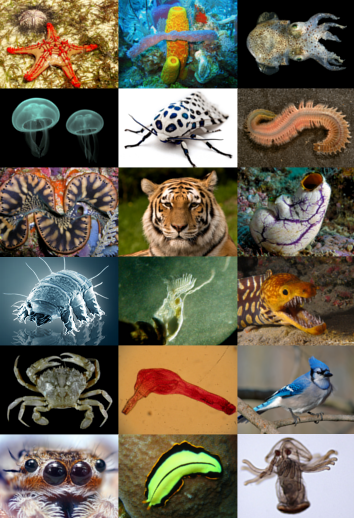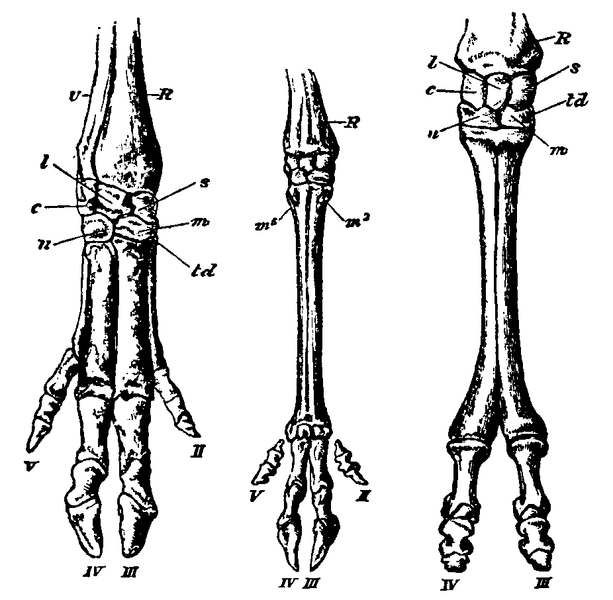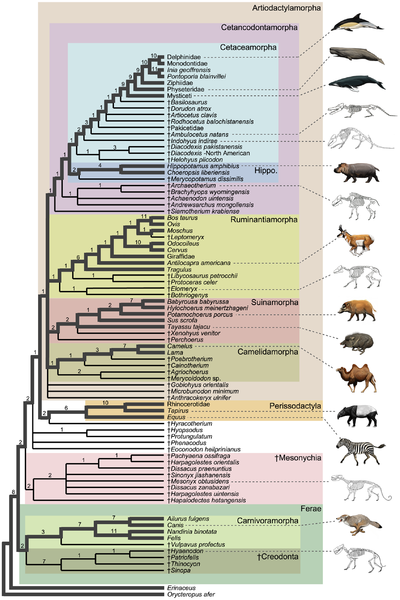Classification
Domain: Eukarya
Kingdom: Animal
Phylum: Chordara
Class: Mammal
Order: Artiodactyla
Family: Bovidae
Genus: Ovibos

Species: O. moschatus
The phylogenetic tree below shows the different mammals that are in the genus Ovibos. The most closely related relative to the muskox is the Capra aegagrus, or more commonly known as the wild goat. An outgroup of this taxa would be the Gallus gallus.
The phylogenetic tree to the left shows the order Artiodactyl and the different animals in this category. Although there are many families in this category, the musk ox fall under the family of Bovidae.
Domain: This domain consists of the majority of
organisms in the world that fall under the categories of animal,
plant, and fungi. These consist of anything that contains
structures found in a nucleus that contain membrane bound
organelles. All of the cells that comprise these organisms contain a
true nucleus. All of these organisms obtain energy from differnt
modes of access to carbon and energy.

Kingdom: Most of the animals that fall under this category are motile and are multicellular. The musk ox fits under this category for another reason that consists of them developing as they gradually get older. Along with those characteristics, another feature that places the musk ox in this category is the fact that they're heterotrophs (Myers 2001).
Phylum: The Chordata phylum consists of animals that have bilateral symmetry and a tail that develops at some point during development. Another characteristic of this phylum is a complete digestive system along with a bony endoskeleton (Myers 2001).
Class: Ovibos moschatus is one of thousands of species of mammals
found under this category. All of these types of mammals are
connected in the way that they all have hair. Two other
characteristics that are unique to this class is the fact that they
all have the same three ear bones and mammary glands to produce milk
for their young (Wund 2005).

Order: The classification in the order Artiodactyl explains that the Ovibos moschatus has hoofed toes on each foot. There are two groups that divide into characteristics by teeth structure, and even the presence or absence of horns. This order has highly developed stomachs that are larger and obtain a longer intestine as well. Another characteristic is that they are grazing animals (Order Artiodactyl 1997).
Family: The family Bovidae is known to roam the grasslands because of their evolution from the grazing lifestyle. They are also known to be gastrointestinal specialized because they have four-chambered stomachs. Africa, North America, Eurasia, India, and southern Asia are native to the Bovidae (Bovidae 2014).
Genus: Ovibos is a mammal consisting of the musk oxen in the artic. This mammal has an intermediate shape and size between an oxen and a sheep. It is a large and shaggy mammal (thefreedictionary.com).
Species: Ovibos moschatus is a musk oxen that has short legs and their entire body covered in fur. Their horns have black on the end of them and are somewhat cream-colored. Since this species lives in the artic tundra, vegetation is rare and the winters are long and bitter (Encyclopedia of Life 2014).
